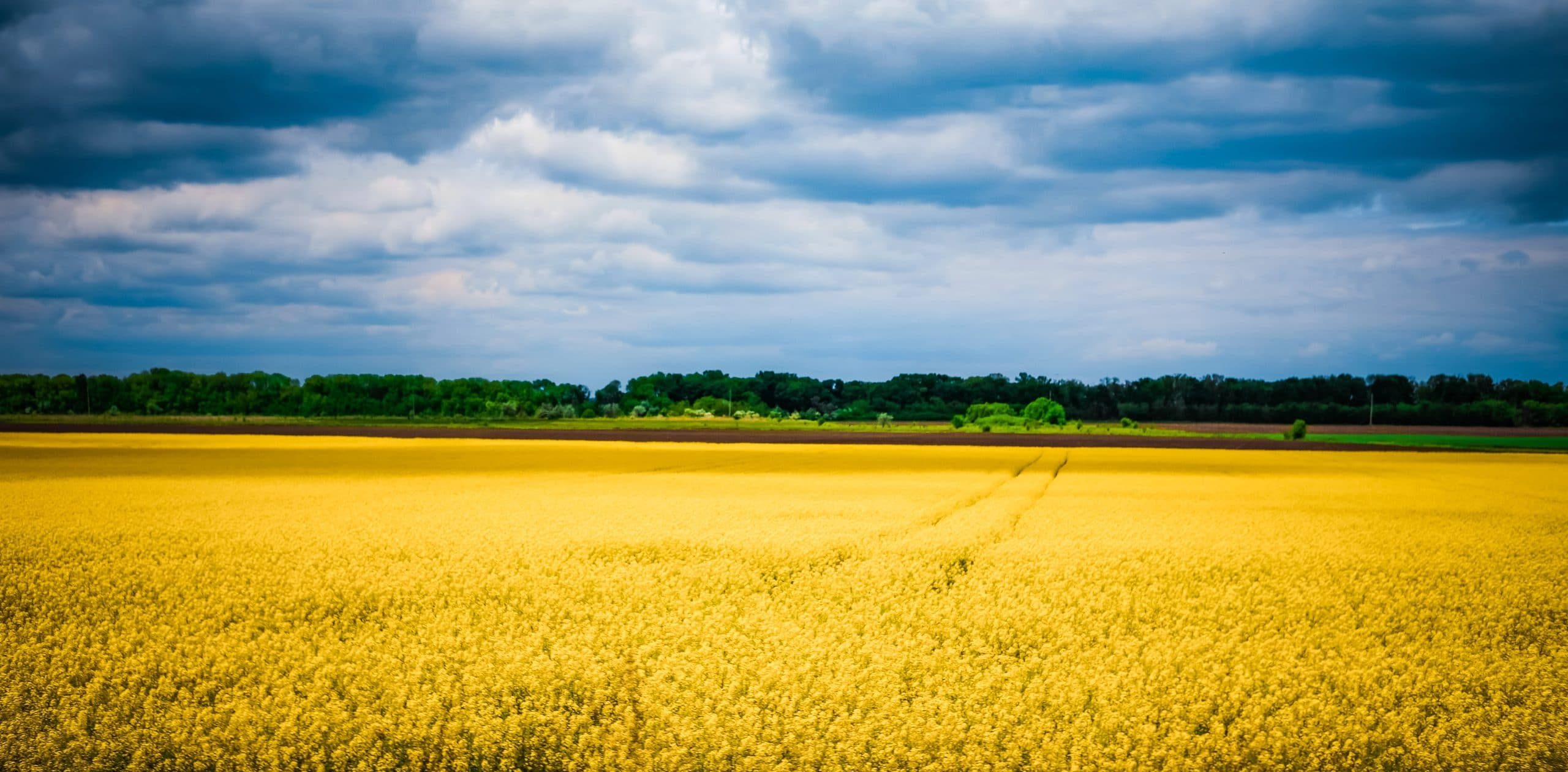 Richard Armitage is a GP and Public Health Specialty Registrar, and Honorary Assistant Professor at the University of Nottingham’s Academic Unit of Population and Lifespan Sciences. He is currently providing primary care to internally displaced people in the east of Ukraine. He is on twitter: @drricharmitage
Richard Armitage is a GP and Public Health Specialty Registrar, and Honorary Assistant Professor at the University of Nottingham’s Academic Unit of Population and Lifespan Sciences. He is currently providing primary care to internally displaced people in the east of Ukraine. He is on twitter: @drricharmitage
The Russian invasion of Ukraine has triggered a mass human migration. Over 5.2 million refugees have fled west into neighbouring European countries and further across the continent,1 while 7.7 million internally displaced people (IDP) have abandoned their homes at the centre of Russian aggression and now temporarily reside in relatively safer locations within Ukraine.2 Since the imposition of martial law on 24 February 2022, male citizens aged 18 to 60 years are prohibited from leaving Ukraine in preparation for potential military conscription or other defensive duties. As a result, many Ukrainian families have been separated, meaning the vast majority of refugees are women, children, and elderly people, who are often unaccompanied.3 Under such circumstances, combined with the conflict-driven increase in housing insecurity, unemployment, informal and unskilled labour participation, poverty and deprivation, and barrier to accessing healthcare, these vulnerable individuals are exposed to substantially increased risks of being affected by modern slavery, sexual and labour exploitation, and human trafficking.
…these vulnerable individuals are exposed to substantially increased risks of being affected by modern slavery, sexual and labour exploitation, and human trafficking.
Both the prevalence of, and risk of being affected by, modern slavery were concerningly high in Ukraine prior to the outbreak of war. In 2018 the Global Slavery Index estimated that 286,000 people in Ukraine (0.64% of the population) were living in modern slavery (rendering it the country with the 49th highest prevalence of modern slavery out of 167 ranked countries), while 54.4% of the population was vulnerable to its impacts.4 In the current context of conflict-driven mass migration, this pre-existing situation is likely to be exacerbated as traffickers avail themselves of opportunities to exploit the inherent susceptibilities of migrating individuals. Traffickers operate both around Ukraine’s western border (on both the Ukrainian side and within the receiving countries) and across the country itself (especially around besieged cities and evacuee facilities).5 Those least able to escape the hostilities, and IDP now residing in temporary evacuee facilities, are particularly susceptible to the dishonest assistance offered by traffickers, as these groups are disproportionately burdened with the greatest health, social and security needs yet have the fewest resources to access them,6 thereby deepening existing inequalities further. Simultaneously, the on-going hostilities substantially reduce the capacity for trafficking activities to be identified and disrupted by Ukrainian officials as the conflict is prioritised by law enforcement and security services, and the mass migration and transient movement of people denies those professionals usually positioned to foil these activities (including healthcare providers, social workers, and labour inspectors) the required access to do so.
Individuals impacted by human trafficking are exposed to the multiple severe health risks associated with this severe form of exploitation…
Individuals impacted by human trafficking are exposed to the multiple severe health risks associated with this severe form of exploitation including violence, physical, mental, psychological and sexual health problems, poverty and deprivation, inadequate sanitation and hygiene, and occupational hazards.7 The over-crowded conditions in which victims are accommodated, along with this group’s disproportionate burden of pre-existing physical and mental health needs, poverty, malnutrition and substance misuse, substantially increases the risk of communicable disease transmission amongst these individuals. These include COVID-19,8 multi drug-resistant tuberculosis, HIV and viral hepatitis (of which a concerningly high prevalence of each is recognised in Ukraine, in combination with low rates of vaccination against COVID-19 and other vaccine-preventable diseases).9 Furthermore, there exist multiple barriers to accessing healthcare both during and after human trafficking activities, including language barriers, exploiter control, and lack of knowledge of healthcare availability.10,11 These barriers are deepened by the existing limitations of the Ukrainian health system that was over-stretched and under reform prior to the outbreak of war, and is now under increasing additional strain due to physical infrastructure damage (often the result of deliberate Russian attack),12 service disruption, and the outflow of healthcare workers in regions under attack, along with the influx of large numbers of IDP with a substantial and growing burden of unmanaged disease. Collectively, these factors exacerbate the morbidity and mortality of victims of human trafficking secondary to unmet health needs, which have been deepened by the direct effects (such as traumatic injuries in civilian combatants) and indirect effects (such as musculoskeletal injuries, uncontrolled chronic disease, acute illness, dehydration and malnutrition, poor sanitation and hygiene, psychological injury, and mental health deterioration in those sheltering or escaping from the hostilities) of the Russian invasion.
The war in Ukraine must not be permitted to further exacerbate the health impacts of human trafficking, and its identification, disruption and prevention must be urgently prioritised by relevant authorities. These include healthcare professionals, statutory services, and humanitarian actors, who should be educated to recognise and effectively respond to trafficking in a collaborative and coordinated manner both across Ukraine and between the countries receiving its refugees.
References
- UNHCR. Operational Data Portal: Ukrainian Refugee Situation. https://data2.unhcr.org/en/situations/ukraine [accessed 26 April 2022]
- IOM. Migration Data Portal: Ukraine. https://www.migrationdataportal.org/ukraine/crisis-movements [accessed 26 April 2022]
- BBC News. Ukraine conflict: Children on their own, parents stay behind. 26 February 2022. https://www.bbc.co.uk/news/world-europe-60539104 [accessed 27 April 2022]
- Global Slavery Index. Ukraine. https://www.globalslaveryindex.org/2018/data/country-data/ukraine/ [accessed 27 April 2022]
- K Fallon, A Cundy and R Crean. Vigilantes stalk Ukraine border as sex traffickers target fleeing women and children. The Guardian 24 March 2022. hhttps://www.theguardian.com/global-development/2022/mar/24/vigilantes-stalk-ukraine-border-as-sex-traffickers-target-fleeing-women-and-children [accessed 27 April 2022]
- R Armitage. War in Ukraine and the inverse care law. The Lancet Region Health Europe. In press.
- S Oram, H Stockl, J Busza, et al. Prevalence and risk of violence and the physical, mental, and sexual health problems associated with human trafficking: systematic review. PLOS Medicine 29 May 2012; 9(5): e1001224. DOI: 10.1371/journal.pmed.1001224
- M Head. Ukraine: disease control is a casualty of war – so a surge in COVID cases is likely. The Conversation 18 March 2022. https://theconversation.com/ukraine-disease-control-is-a-casualty-of-war-so-a-surge-in-covid-cases-is-likely-179218 [accessed 27 April 2022]
- Ioffe et al. Meeting the health challenges of displaced populations from Ukraine. The Lancet 11 March 2022; 399(10331): 1206-1208. DOI: 10.1016/S0140-6736(22)00477-9
- J Westwood J, LM Howard, N Stanley, et al. Access to, and experiences of, healthcare services by trafficked people: findings from a mixed-methods study in England. British Journal of General Practice November 2016; 66(652): e794–801. DOI: 10.3399/bjgp16X687073.
- L Kiss, NS Pocock, V Naisanguansri. Health of men, women, and children in post- trafficking services in Cambodia, Thailand, and Vietnam: an observational cross- sectional study. The Lancet Global Health 01 March 2015; 3(3): 154–61 DOI: 10.1016/S2214-109X(15)70016-1
- S Ahsan. Seeking accountability for Ukraine health-care attacks. The Lancet 26 March 2022; 399(10331): 1215-1216. DOI: 10.1016/S0140-6736(22)00569-4
Featured image by Olga Subach on Unsplash






